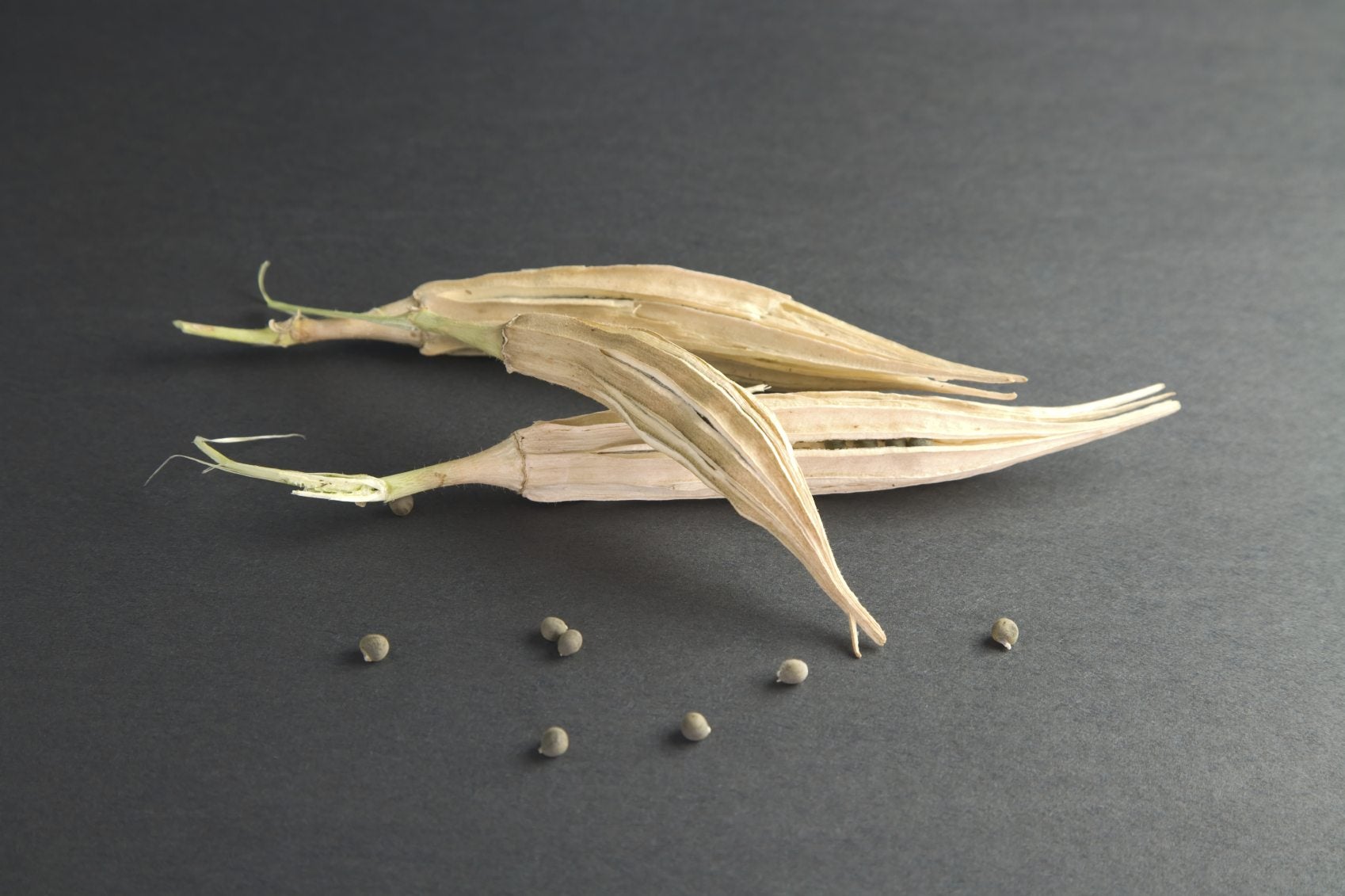Collecting Okra Seeds – How To Save Okra Seeds For Planting Later


Okra is a warm season vegetable that produces long, thin, edible pods, nicknamed ladies’ fingers. If you grow okra in your garden, collecting okra seeds is a cheap and easy way to get seeds for next year’s garden. Read on to find out how to save okra seeds.
Saving Okra Seeds
Grow okra plants in full sun in well-drained soil. Plant okra in the spring several weeks after all danger of frost has passed. Although okra grows with minimal irrigation, watering every week will produce more okra seed pods. If you're interested in saving okra seeds from species in your garden, make sure the plants are isolated from other okra varieties. Otherwise, your seeds might be hybrids. Okra is pollinated by insects. If an insect brings pollen from some other okra variety to your plants, the okra seed pods may contain seeds that are hybrids of the two varieties. You can prevent this by growing only one variety of okra in your garden.
Okra Seed Harvesting
Timing on okra seed harvesting depends on whether you are growing okra seed pods to eat or collecting okra seeds. An okra plant flowers a few months after planting, and then it produces seed pods. Gardeners raising seed pods to eat should pick them when they are about 3 inches (8 cm.) long. Those collecting okra seeds, however, must wait awhile longer and allow the okra seed pod to grow as big as it can. For okra seed harvesting, the seed pods must dry on the vine and beginning to crack or split. At that point, you can remove the pods and split or twist them. The seeds will come out easily, so keep a bowl nearby. Since no fleshy vegetable matter clings to the seeds, you don’t need to wash them. Instead, dry the seeds in the open air for a few days, then store them in an airtight jar in the refrigerator. Although some okra seeds can remain viable for up to four years, many do not. It's best to use collected okra seeds the next growing season. For best results, soak the seeds in water for a day or two before planting.
Sign up for the Gardening Know How newsletter today and receive a free copy of our e-book "How to Grow Delicious Tomatoes".

Teo Spengler is a master gardener and a docent at the San Francisco Botanical Garden, where she hosts public tours. She has studied horticulture and written about nature, trees, plants, and gardening for more than two decades, following a career as an attorney and legal writer. Her extended family includes some 30 houseplants and hundreds of outdoor plants, including 250 trees, which are her main passion. Spengler currently splits her life between San Francisco and the French Basque Country, though she was raised in Alaska, giving her experience of gardening in a range of climates.